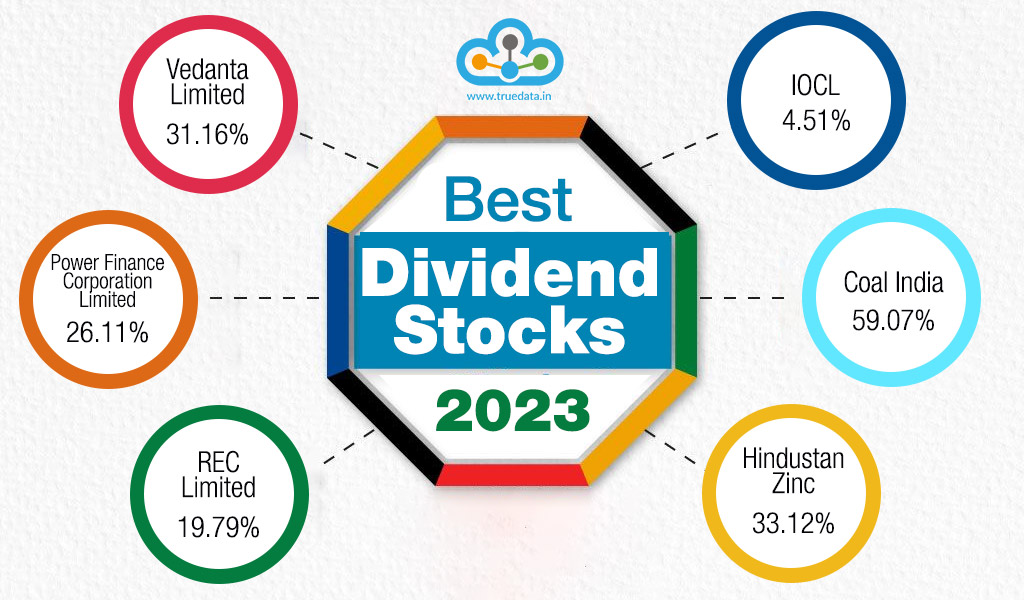
Investing in best dividend stocks is still a great way to increase wealth and create passive income. Even experienced investors, meanwhile, are susceptible to typical pitfalls that raise risk and reduce profits. You may put your dividend portfolio in a better position for long-term success by being aware of and staying away from these eight crucial errors. Let’s examine the potential roadblocks preventing you from succeeding with dividend investing.
- Chasing Unsustainably High Yields
Similar to a flashy object attracting your attention in a busy area, a sky-high dividend yield may be quite alluring. But yields that look too wonderful to be true are frequently just that. It’s possible that companies with very high yields are going through financial difficulties, as evidenced by the sharp decline in stock prices and the temporary stability of dividend payments. This often comes before a harsh dividend decrease. Astute investors consider the payout ratio, profits growth, and overall financial health in addition to the headline yield figure. Over time, a financially stable company’s consistent 3-4% yield will usually beat a riskier 8–10% yield, which frequently leads to both dividend cuts and share price drops.
- Ignoring Dividend Growth Potential
It’s like praising a seedling without taking into account its potential if you only pay attention to present yield and ignore dividend growth potential. Choosing equities with high current yields but no potential to increase dividends over time is a common error made by investors. In ten years, a company that pays a low 2% yield now but grows its dividend at a rate of 10% per year would generate far more income than a static 4% yielder. The rising dividend payments as well as reinvested dividends are subject to the force of compounding. Strong company fundamentals, wise capital allocation, and management’s faith in future cash flows are all characteristics of companies that consistently increase their dividends. Prioritizing dividend growth in addition to yield helps you create a portfolio that generates steadily rising income, which fights inflation and speeds up wealth accumulation.
- Neglecting Fundamental Research
Choosing dividend stocks without doing an in-depth fundamental analysis and only looking at yield statistics is like purchasing a home without looking at the foundation. Examining important variables like debt levels, industry positioning, competitive advantages, earnings consistency, and free cash flow is necessary for quality dividend investing. Investors run the danger of packing their portfolios with financially precarious businesses whose alluring payouts can disappear when the economy tightens without this analysis. Every possible investment should be thoroughly investigated, including by looking over several years’ worth of financial records, comprehending the company plan, evaluating the caliber of management, and assessing potential rivals. In contrast to fair-weather dividend payers that reduce payouts when difficulties occur, this research aids in identifying genuinely outstanding dividend payers—businesses with enduring advantages that allow them to retain and enhance payments over a variety of economic cycles.
- Overlooking Diversification
Like constructing your house on a single support beam, concentrating your dividend portfolio on just one or two industries adds needless risk. By overinvesting in industries that have historically produced high returns, such as utilities, telecommunications, or real estate, many investors fall into this trap. An undiversified portfolio can be destroyed by sector-specific downturns, even if these businesses sometimes provide alluring dividends. various economic conditions favor various industries. For example, utilities may be under pressure from rising interest rates, while financial profit and retail dividends may be at risk from technological disruption, and technology dividends continue to increase. Investments in a well-diversified dividend portfolio should be distributed throughout several sectors, regions, and business sizes. This technique assures that weakness in one area won’t threaten your total cash stream.
- Focusing Only on Dividend History
Although a lengthy history of dividend payments suggests consistency, making investing decisions only based on dividend history is like driving forward while only looking in the rearview mirror. Even companies with decades of dividend increases in a row may experience unanticipated shocks from new competitors, changing customer tastes, or technology advancements. Before drastically cutting its payout in recent years, General Electric kept it constant for decades. Analysis of the future must supplement that of the past. Assess if the business has enduring competitive advantages, works in a developing sector, and has flexibility in response to shifting circumstances. The top dividend investments guarantee that they can continue to pay dividends while expanding their companies in dynamic marketplaces by fusing outstanding payment records with promising future possibilities.
- Ignoring Tax Implications
Like ignoring a gradual leak in your financial plumbing, ignoring the tax implications of your dividend investing plan can drastically reduce your real returns. The tax treatment of various dividend forms varies. Ordinary dividends are currently subject to higher ordinary income tax rates, whilst qualified dividends currently enjoy favorable tax rates. Where you keep your dividend stocks is also very important. More of your dividend income can be preserved if you maintain more tax-efficient assets in taxable accounts and place high-yielding investments in tax-advantaged accounts. Compared to higher-yielding but fully taxable dividend equities, municipal bond investments may give tax-free income to those in higher tax brackets, which would result in superior after-tax returns. Rather than being an afterthought, strategic tax planning ought to be a fundamental component of dividend investment.
- Timing the Market With Dividend Stocks
Like continually stopping and resuming a long journey, trying to schedule entrance and departure points with dividend investments usually lowers long-term profits. When given longer time horizons, dividend investing’s compounding potential performs well. The reinvestment cycle that propels wealth building is disrupted when many investors sell reliable dividend payers during market turmoil. Others put off purchases in anticipation of “perfect” entry moments, which hardly ever come. Time in the market consistently beats timing the market, according to research, especially when it comes to dividend investments where continuous income multiplies. Instead of attempting to forecast immediate price changes, concentrate on progressively accumulating holdings in top-notch businesses at fair prices. No matter the state of the market, think about using dollar-cost averaging to buy dividend stocks consistently.
Conclusion
Patience, study, and discipline are necessary for successful dividend investment. You may structure your portfolio for long-term development and income by staying away from these eight typical blunders. Keep in mind that over time, reputable businesses with solid foundations and fair yields usually beat gaudy high-yielders. Reinvest regularly, stay committed to your long-term objectives, and allow compound interest to work its magic on your financial future.
